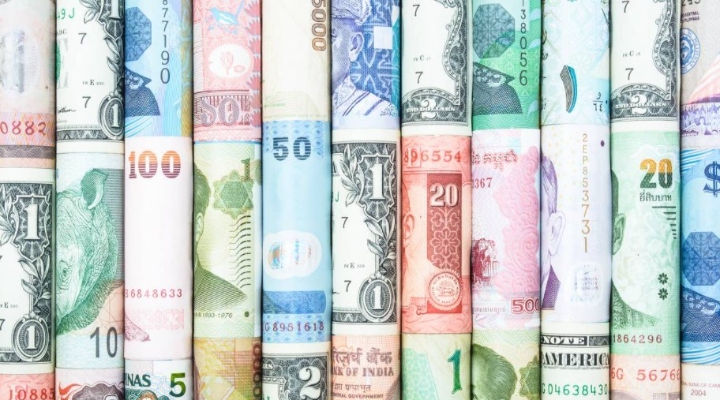
Active ETFs continue to represent a modest segment of the European exchange-traded fund (ETF) landscape, accounting for just around 2% of total assets.
That's according to Morningstar data.
However, the active ETF landscape in Europe has experienced huge growth. As of March 31, 2024, Morningstar data shows that the 87 active ETFs now available on the continent had accumulated a whopping €33.8 billion (£29 billion) in assets.
These findings are contained in Morningstar’s new report, Active ETFs in Europe: Small, Shy, and on the Rise, written by Monika Calay, Mara Dobrescu, Francesco Paganelli and Jose Garcia-Zarate.
The report tracks the proliferation of active ETFs, the ETF houses holding the most assets, and how the European market for ETFs differs from other parts of the world.
Why Are ETFs so Popular?
ETFs have shot up in popularity because they are seen as a low-cost alternatives to expensive active funds. This is a train that active managers could jump on to better compete against the wave of low-cost passive investment vehicles, which have pulled thousands of clients away from the active space – or so some argue.
Indeed, the three-month rolling average Morningstar Representative Cost Ex Transaction Fee (Annualised) for European active ETFs in Europe shows a steady decline in fees has taken place.
Representative costs were at 0.41% for ETFs in March 2013 but they had dropped to 0.28% by March 2024, highlighting the European ETF Market knows that, to win over clients, it must provide affordable costs.
What Kinds of ETFs Are People Buying?
Active ETFs first developed within the fixed income asset class, but now most flows are piling into equity strategies. Most of these products have seen net positive flows over the trailing 12-month period to the end of March 2024 – of around €6.4 billion.
Even though European active equity funds have suffered outflows, active equity ETFs have bucked the negative trend, with JP Morgan's and Fidelity's research-enhanced ranges capturing the bulk of inflows.
Flows into fixed income active ETFs over the past two years have been a mixed bag. Flows have largely been driven by the largest bond fund in the cohort: Pimco USD Short Maturity ETF. This fund experienced more than €1 billion in outflows in the month of November 2023 alone, as investors tactically reallocated away from short-term USD rates.
Over 2023, active ETFs in the ultra-short-term European bond space, such as Pimco Euro Short Maturity ETF, JPM EUR Ultra Short Income ETF, and Franklin Euro Short Maturity ETF, experienced outflows. Meanwhile, funds invested in longer maturities gained net inflows during the same period.
ETFs present a growth opportunity for active managers, but so far assets have mostly funnelled to a few issuers, like J.P. Morgan, Pimco, and Fidelity.
Equity ETFs: Young and Shy
In the US market high-conviction ETFs are common, but these are few and far between in Europe. ARK's April 2024 debut in the UCITS market bucks this trend, but ARK seems to be the exception rather than the norm.
The median European active ETF investing in equities holds more than 150 stocks in its portfolio; three quarters were launched in 2020 or later; and all equity vehicles are domiciled in Ireland, with the vast majority integrating ESG factors into their processes.
Primarily consisting of region-specific themes and research-enhanced strategies that share several similarities, the JPM and Fidelity ETF ranges display relatively low base fees and demonstrate a benchmark-constrained portfolio construction approach.
Such tight constraints offer an easier entry point for investors andd the low fees make them more competitive. The second group of active ETFs includes more niche and expensive products that have been launched over the last two years. For instance, the AXA Biodiversity and Climate Equity strateges, or JPM's US Value and Growth ETFs.
Multi-Asset Active ETFs: The Right Time?
Only a few asset managers have ventured into actively-managed multi-asset ETFs. Indeed, Morningstar takes the view that lower-cost active ETFs can have a disruptive role in multi-asset investing space. Our analysts argue passive structures have been unable to establish themselves in an arena that needs active thought processes.
Four major players now dominate this small field. DWS led the way, offering two balanced active ETFs funds more than a decade ago. Then in 2020 came BlackRock (whose active ETF products were recently rebranded as iShares) and then Vanguard.
Their respective ranges share several commonalities, offering a globally diversified, one-stop solution spanning multiple asset classes, with strategic asset class splits in accordance with their target risk.
The relative cheapness of the iShares and Vanguard ranges represents a major edge relative to traditional multi-asset funds and makes them potentially enticing.
Meanwhile, Amundi essentially acquired its multi-asset products in the Lyxor deal. But in many European countries, the challenge will come from local players who already provide multi-asset products. They are heavily dependent on commission-based remuneration models and so have little incentive to endanger their existing fund range and the high costs they charge on active funds.









.jpg)

















